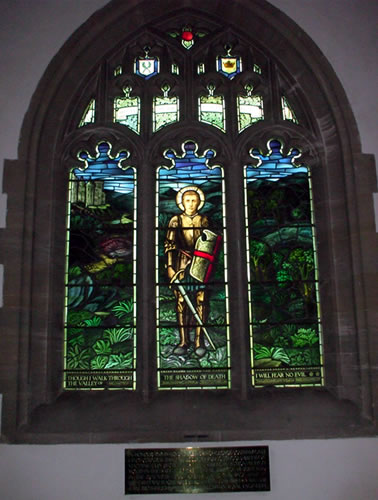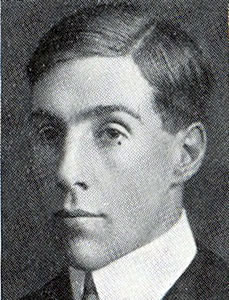New Book to Commemorate Wincanton's First World War Soldiers
 Next year sees the 100th anniversary of the start of First World War - known to many as "The Great War". Wincanton, like every town in the country, rallied to the call and records show that as well as the many Army reservists living here, men from the town joined the Army and Navy in droves.
Next year sees the 100th anniversary of the start of First World War - known to many as "The Great War". Wincanton, like every town in the country, rallied to the call and records show that as well as the many Army reservists living here, men from the town joined the Army and Navy in droves.
Somewhat surprisingly for a small country town there were several men from Wincanton who were regular soldiers and lots were in the relatively new Territorial Army, having been in the Militia. The Roll of Honour in the Parish Church records thirty seven names of men associated with the town who lost their lives in that conflict.
One Remembrance Sunday when the Reverend Stafford Low was rector at the parish church I sat in the congregation, spellbound, when Stafford told us about "Cash's Window" in the church, which is on the left hand side facing the altar.
The window, paid for by the Cash family, depicts St. George slaying the dragon but as Stafford pointed out the face of St. George is somewhat unusual; it is reputed to be that of George South Cash to whom the window is dedicated and who lost his life at the infamous Battle of the Somme in July 1916.
This fired my interest and I checked further to find George Cash's story. It also inspired me to attempt to write a book about every man shown on the Roll of Honour, which is being published to coincide with the 100th anniversary commemorations and the proceeds will be donated to Wincanton Poppy Appeal 2014.
George Cash's father was John Oliver Cash and mother Ada Cash and they lived at 5 - 7 High Street, Wincanton, which is the building now occupied by Clementina's store. John Cash was a Bachelor of Arts (Oxford) and was a solicitor and commissioner for oaths. He was clerk to the Feoffees of Town Charities and agent for Commercial Union Insurance Company.
 George Cash was born in Castle Cary in 1891 and had one older brother, John Newman Cash. George was educated at Clifton College, Bristol, where he undertook an engineering course. After Clifton College, George studied at McGill University, Montreal, where he achieved a Bachelor of Science degree in engineering in 1912.
George Cash was born in Castle Cary in 1891 and had one older brother, John Newman Cash. George was educated at Clifton College, Bristol, where he undertook an engineering course. After Clifton College, George studied at McGill University, Montreal, where he achieved a Bachelor of Science degree in engineering in 1912.
George came back to England on 9th August 1913 on board the White Star liner Olympic and went on to gain a job as a mechanical engineer. War broke out on 4th August 1914 and George's brother John was accepted for a commission in the army. George would also have qualified for a commission but declined, enlisting instead as a private soldier.
He reported to the recruiting office at 24, St. James Street, London on 18th September 1914, joining the 16th Bn. (Public Schools Battalion) The Middlesex Regiment. His brother John had by this time gained a commission with the Royal Engineers and was a 2nd Lieutenant and would subsequently be awarded the Military Cross for bravery.
After undergoing basic training at Kempton Park racecourse and Perham Down the regiment went to France, landing at Boulogne on 16th November 1915 and spending the winter at Etaples with the 33rd Infantry Brigade.
George was sent back to England on 21st February 1916 during which time he underwent training on the machine gun and returned to his regiment on 15th June 1916. He took part in the battles on the 1st July 1916 at the Somme and survived, although his regiment suffered very heavy casualties taking Hawthorne Ridge.
Most regiments were depleted and reorganised after the battle and George found himself being transferred to the 22nd Manchester Regiment in charge of a Lewis gun section; he was by then a Lance Corporal. The Regiment were attempting to capture High Wood on 15th July 1916 and the machine gun was positioned at a very dangerous point. George was struck by an enemy machine gun bullet which hit him in the forehead and he died instantly.
Writing to George's mother his officer, 2nd Lt. C. Duguid. 22nd Manchester Regt. wrote:
"Dear Mrs. Cash,
"I regret to inform you that your son L/Cpl Cash was killed in action on the evening of 14th July. He was in charge of one of our Lewis Gun teams at work in one of the most dangerous points in our line, a place which is still resisting our efforts. A machine gun bullet struck him in the forehead and death was instantaneous.
"He had been with us only a few days, but we had time to appreciate his value, and now with you we mourn his loss. All who knew him join with me in sending you our expression of deepest sympathy."
The Cash family was very prominent in Wincanton and Cash's Park is named after them. The Wincanton Roll of Honour shows him as Sergeant but all other records show him as a Lance Corporal, perhaps awaiting promotion.
He has no known grave and is commemorated on the Thiepval memorial to the missing, panel 12D and 13B; he was 25 years old.
I have been to the Somme on several occasions and always feel drawn to place a tribute to George and the other three Wincanton soldiers named on the Memorial to the Missing at Thiepval.
The task of writing the tribute book on all our soldiers and sailors is proving quite a challenge as all of them now are beyond living memory, but I have achieved a remarkable amount of information on those named on the memorial. I have been fortunate enough to have found many of their photographs and stories and I feel strongly that people should know that those names on the memorial were "real people" albeit who had short lives, lived in our town and lost their lives for their country.
At this moment though there are some that I am struggling with and if anyone is related to or knows of the following I would be most grateful for any information or clues:
Sgt. William E. Hannam, L/Cpl. Henry B. Wadman, Pt. Harold Dean Davis, Pte. Walter Dowding, Pte. Frederick S. Doughty, Pte. Frank Farncis, Pte. Reginal Hill, Pte. Frederick Hoyle, Pte. Charles Mullins & Pte. Roger Mullins, Pte Harry Sims, Chief Steward Robert Snook.
Any information can be sent to me at , or call 01963 824193.
Comments
Login to comment!